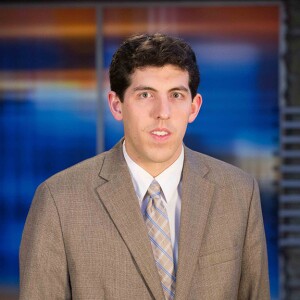HELENA — Effective polling is about a lot more than just asking someone who they’re going to vote for.
That’s a lesson that students in Carroll College’s class on “Elections, Political Parties and Public Opinion” are learning firsthand.
“It seems pretty easy – like you just present questions to respondents,” said senior Sofia Wright. “It is not as easy as it seems when you're just using the data.”
Wright is one of about 20 students in the class, taught by associate professor Alex Street. Ten years ago, Street was in his first year teaching at Carroll and got his students started conducting an exit poll in Lewis and Clark County. Since then, they’ve continued the program every two years when there’s a statewide election in Montana.
“Part of the reason to do it as a class activity is to get a bit of a closer sense of what's this like – and when you have to do it yourself, I think you also get a bit of a clearer sense of how it can go wrong, but also of how hard it can be to do it right,” Street said.

Right now, the students are coming up with the questions they want included in the poll. They’ll refine the questions, narrow them down to about ten, then put together a one-page document with what they’ll be asking voters by mail and as they leave the polls.
Wright previously took a class that used the data from the 2022 exit poll.
“I do remember in the research class there was a lot of critiques to the way that the questions were worded,” she said. “You only get so much space, so every word counts – and, you know, it might rub voters the wrong way. You just have to be very concise, and it's hard.”
Street says, for any poll, the biggest challenge is making sure the responses are representative – that no group of voters is too heavily weighted.
“Under some assumptions, if you have a bigger sample, then it's going to have more precision,” he said. “But that's only true if you have a representative sample. If you're only talking to people who agree on something, no matter how many more of them you get, that doesn't make it any better as a sample.”
Paxton Sheppard, a junior, says he learned that lesson already when he set up a Twitter poll for a class two years ago – getting responses mostly from his professor’s political acquaintances.
“It was very interesting results — like, according to the poll, Montana is very different than what Montana actually is,” he said. “I mean, I got 100-something results. I was like, ‘This is a wonderful poll.’ And then I was like, ‘Well, I'm only polling very certain individuals.’”

Each election is different, and Street says pollsters are always trying to adjust to what they learned last time – but there’s always a possibility they’re still not hearing enough from specific groups.
He pointed to times when candidates appeal to new sets of voters, or when voters are skeptical of polls or the organizations sponsoring them.
“In that case, it's not just random, it's not just chance that you don't include those people – it's actually a bias,” he said. “And that is the big issue that we worry about in polling.”
Street said, that when you see results from a political poll, it’s important to remember there’s uncertainty in the result, with the reported margin of error meaning that each candidate’s level of support could be that many percentage points higher or lower.
He said polls are also taking snapshots of a particular moment, and a lot can change by Election Day.
“One thing that we've definitely learned is not to read too much into the fine numbers,” he said.

But Street said, while candidate polls get a lot of attention, elections are far from the only reason to do polls.
“There's also ongoing efforts to poll people and understand, what are the issues they care about? Are we missing things that people care about?” he said. “And I tend to find those honestly more fulfilling. That's the kind of polling we try and do with our students.”
Sheppard calls himself a political junkie and says he spends a lot of looking at polls, but going through this class changed how he views them.
“This class sent me into a little bit of a spiral when it comes to politics, because I thought I knew so much about how polling works and about how to study politics in general,” he said. “But there's been a lot of literature we've read suggesting that maybe these polls are telling us things we haven't really thought about, or are painting a picture that we haven't even been looking at.”
The students will be traveling in pairs to polling places around Lewis and Clark County to conduct their exit poll in November. Street says they’ve typically gotten about 1,000 voters to participate.
The mail survey, intended to reach the growing number of Montana voters who use absentee ballots, will go out to about 750 voters in several rural counties.



